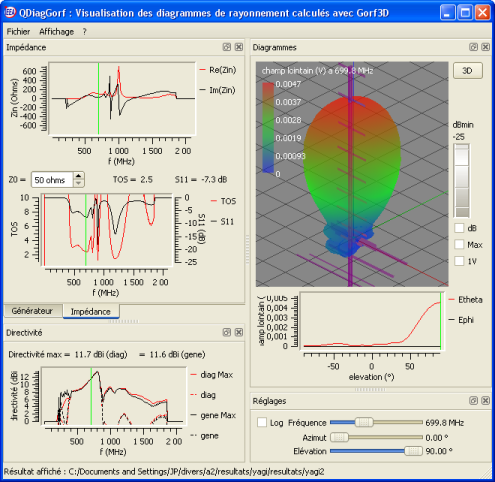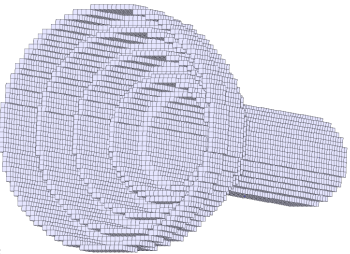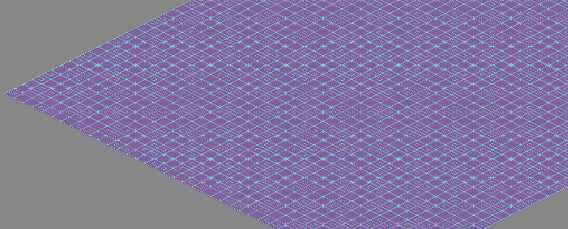Gorf3D is a FDTD solver developed and owned by the CEA/Gramat (formerly CEG/DGA). This tool takes advantage of the mutli-CPU hardware to handle large objects with complex parts. Mainly intended to compute the transient coupling, it can also be used to simulate a wide frequency range with only one single run.
IEEA has been involved as a sub-contractor in the coding of several modules available in Gorf3D : materials, Floquet conditions, waveguide ports and terminations, near field to far field transformation, lumped elements.
Besides solver improvements, IEEA also provided post-processing tools based on our experience in software development and our expertise in specific application fields. One of our main achievements is the QDiag tools suite. Post processing Gorf3D outputs, it is able to compute all the classical antenna parameters (input impedance, radiation pattern) and even apply the reciprocity theorem in the time domain to evaluate the coupling of the antenna with any incoming plane wave.
QDiag GUI :

Many applications of Gorf3D are presented on our website. Here are some typical examples.
Mesh of a truck for coupling simulation :

Axially corrugated horn for radiation pattern simulation (satellite dish feed) :

Large sample of periodic pattern for RCS computation (EM workshop, ISAE) :











